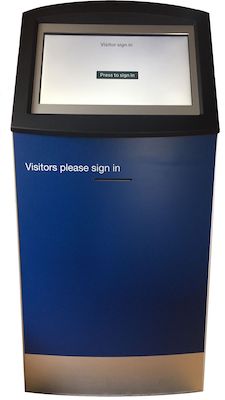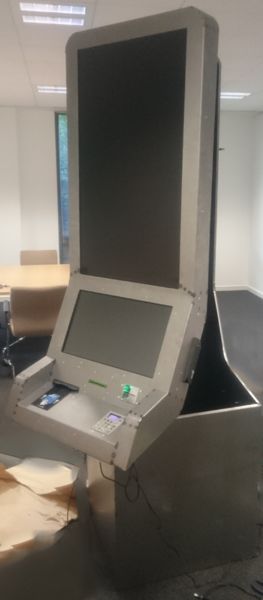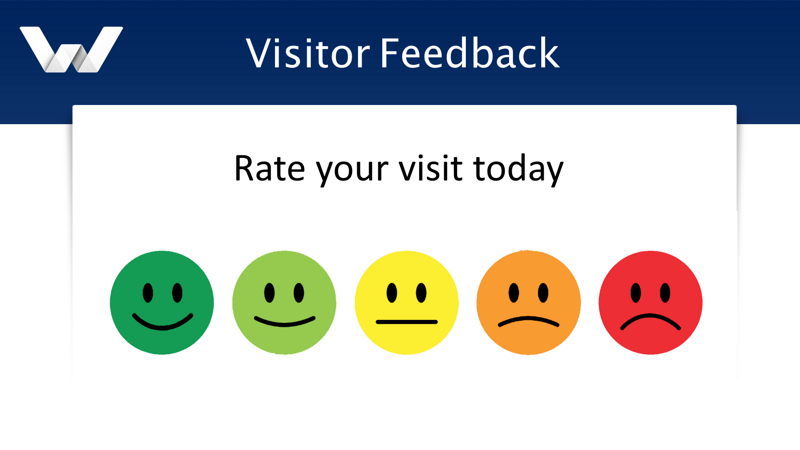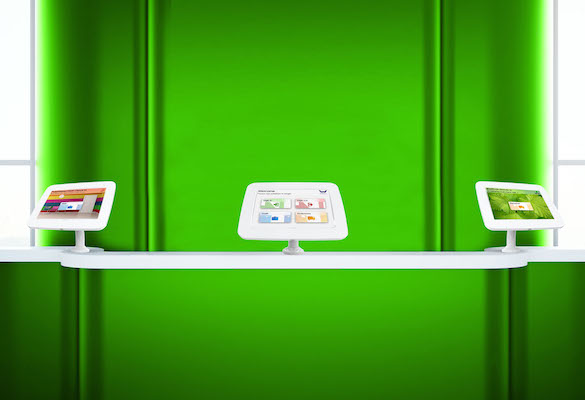Introduction
We regularly hear from companies with the same story — at some point in the past they’ve spent significant money on bespoke touch screen kiosk systems and whilst the hardware may still be fine, the software no longer meets expectations. This means the systems are under utilised, and due to the initial high capital expenditure the company will not see a return on investment in the system.
Common applications for kiosk based systems include visitor management, customer service and queue management and can take the form of a large floor standing kiosk, a wall mounted unit or a smaller desk mounted unit.

Some of the reasons for poor usage include:
- The business goals of the company may have changed
- The software provides a poor user experience
- Wrong placement of the kiosks
This can result in the kiosks being turned off and mothballed, or worse still ending up as waste electrical and electronic equipment.
So what to do with expensive equipment that isn’t providing a return on investment?
Uses for your old kiosk hardware
1. Re-create existing software with newer technologies
Companies with under-utilised equipment should find out the reasons for low engagement with their kiosks — what are the frustrations that lead to users not using them?
If the user interface and experience is poor, new software that performs similar functions but with an updated and more intuitive user interface will improve engagement.
Fixing bugs and improving reliability and functionality will make stakeholders within the company more willing to promote the use of the system to staff and visitors.
New software can be in the form of a standalone application installed on the kiosk, or a browser based solution. There are pros and cons to both approaches, which we discuss in depth in this article.
2. Improve performance with new or additional hardware
The addition of webcams or QR code scanners may add beneficial functionality to an existing system, or speed up a process. If the computer that powers the kiosk is not performing adequately, this can be upgraded or replaced with new hardware.
With the advances in low power, low cost hardware such as the Intel Compute Stick and the Raspberry Pi, performance can be significantly improved for a low capital outlay.
3. Digital Signage
Kiosk displays can be used to present important information to visitors. Depending on the kiosk hardware, this can be in the form of images, text or videos with or without sound.
This system can be interactive if the system uses touch screens, or even integrated with other systems to display particular information at defined times or to specific visitors if required.
The content for digital signage systems is typically managed by a secure web based dashboard that administrators can access.
4. Customer, visitor and staff feedback terminal
Using a kiosk for conducting surveys in your business premises can be a great way of capturing real time and relevant feedback from your visitors, customers and/or staff.
The survey can be as straightforward as the simple 1–5 rating example shown here, or can involve a more in-depth set of questions.
Feedback systems are typically administered by a secure web dashboard where the type of survey and wording of the questions can be configured, and the results viewed and analysed. If internet connectivity is problematic then an offline version should be deployed that saves the results directly to the kiosk.
5. Interactive help
Using the kiosk for interactive help is an expansion of the digital signage solution above, with a greater emphasis on encouraging the user to browse the help topics to find the answers they need. This information could relate to the building, the company, or the available facilities in the surrounding area, for example.
A secure web based dashboard will allow an administrator to configure help topics and information.
6. Charity donations kiosk
For businesses with kiosks with chip and pin or contactless payment terminals that are no longer required for their original purpose, systems can be adapted to collect payments for charitable donations.
Socially responsible companies who are keen to encourage their staff to contribute to good causes can combine this solution with a customer feedback kiosk to determine the choice of charities and how funds are distributed.
7. Free wifi with instructions
Businesses that provide guest wifi facilities can benefit from using a kiosk to manage users and automate the distribution of wifi credentials to their visitors. Guests can be prompted to enter identifying information before they are given guest access in order for administrators to track usage.
Wifi equipment can be located within the kiosks if required, utilising the existing power and network connectivity for the kiosk. Guest wifi systems can integrate with standard wifi setups, or enterprise solutions such as Cisco ISE, Aruba ClearPass and Cisco Meraki.
8. Company dashboard — stats/notices
For companies that share performance data with their staff, a kiosk can be re-purposed as a company dashboard that can show business metrics such as sales performance vs targets, average customer support ticket resolution time or current call hold time.
These can be static displays or interactive, depending on the type and amount of information the company wishes to display.

A kiosk being decommissioned — don’t let your kiosk equipment go to waste!
Summary
Low use or non-use of your touch screen kiosks need not mean the end of the road for the kiosk hardware. We hope this article has provided some ideas of how your business can continue to derive a benefit from its investment, prevent unnecessary electronic waste and improve visitor and staff satisfaction.







